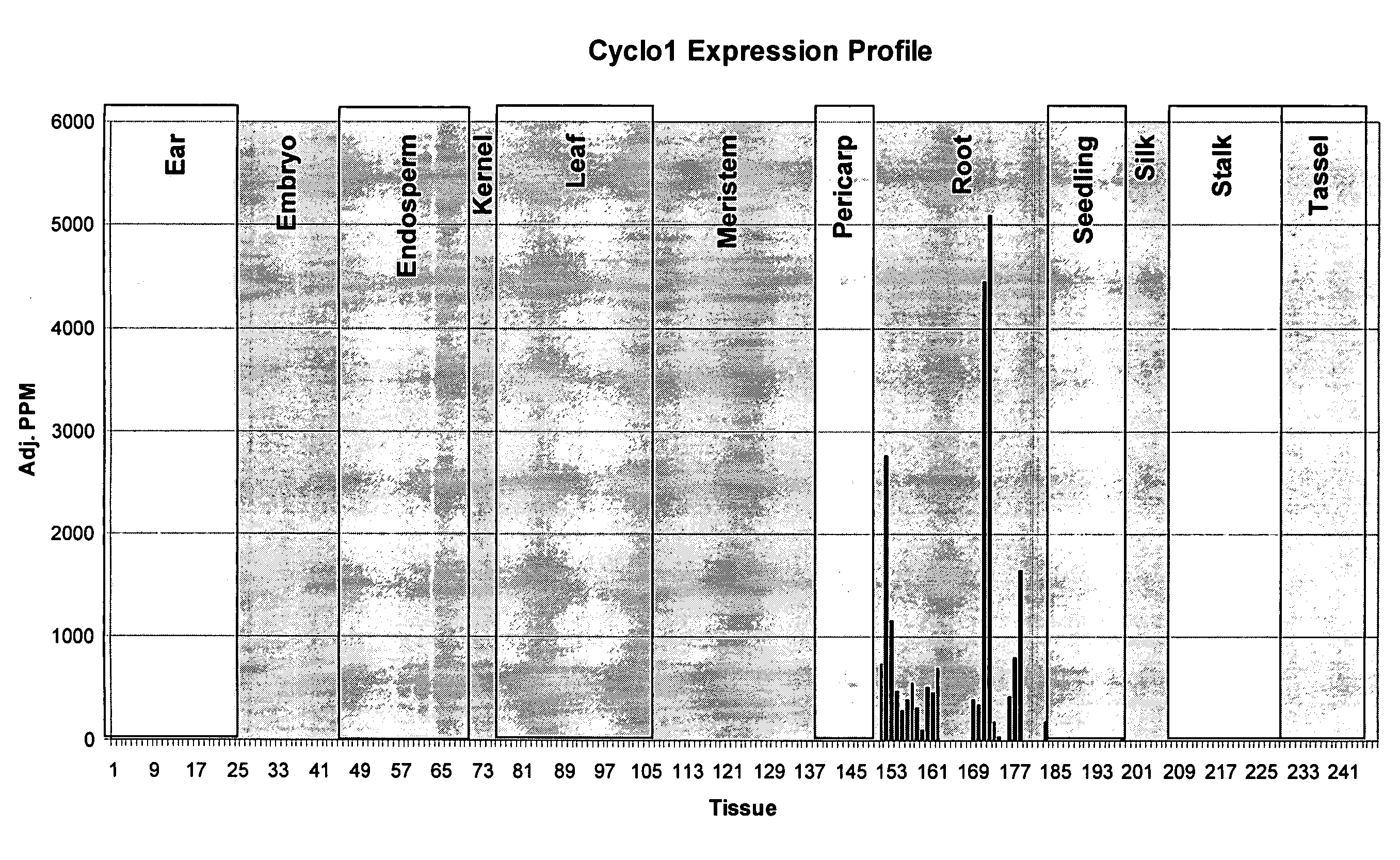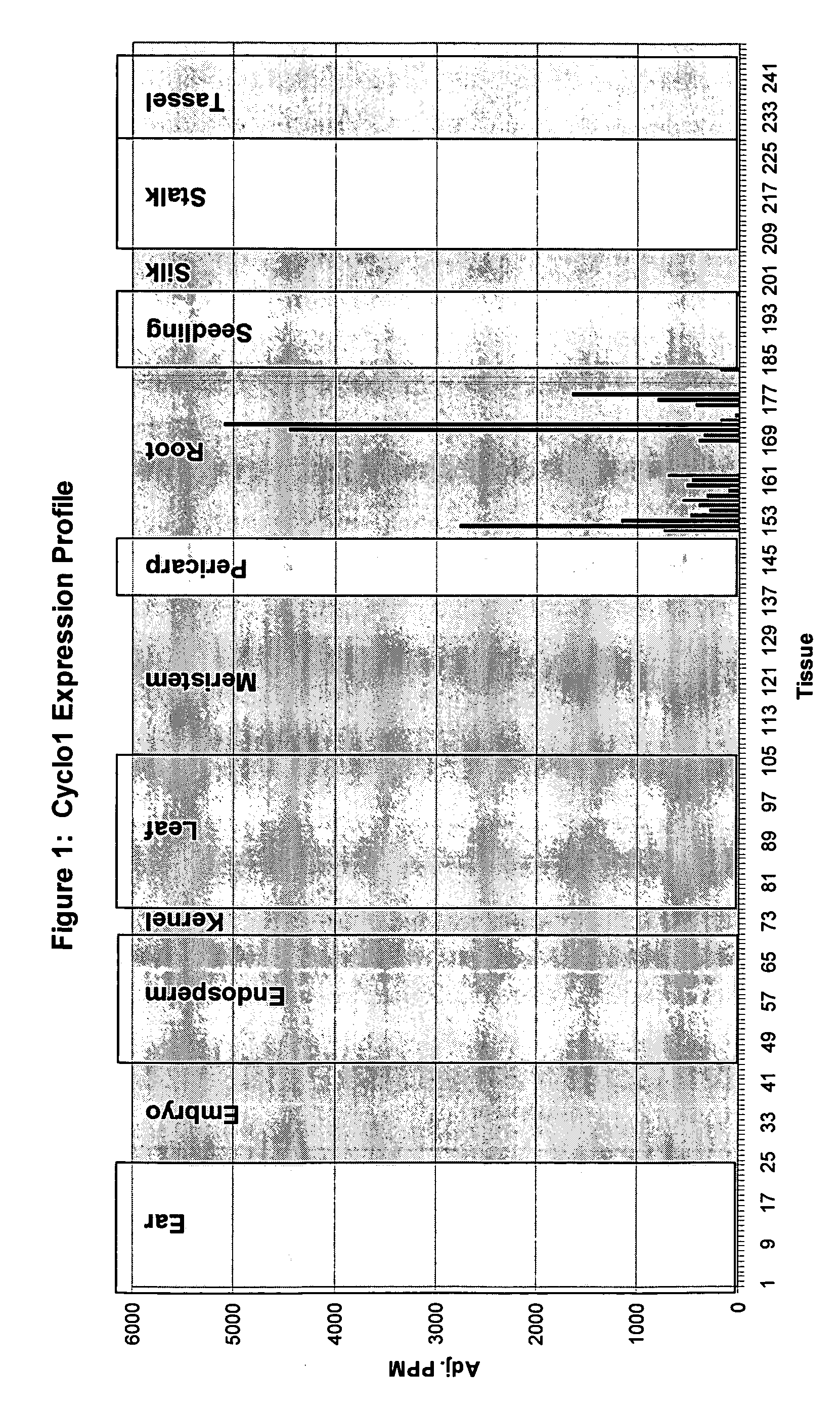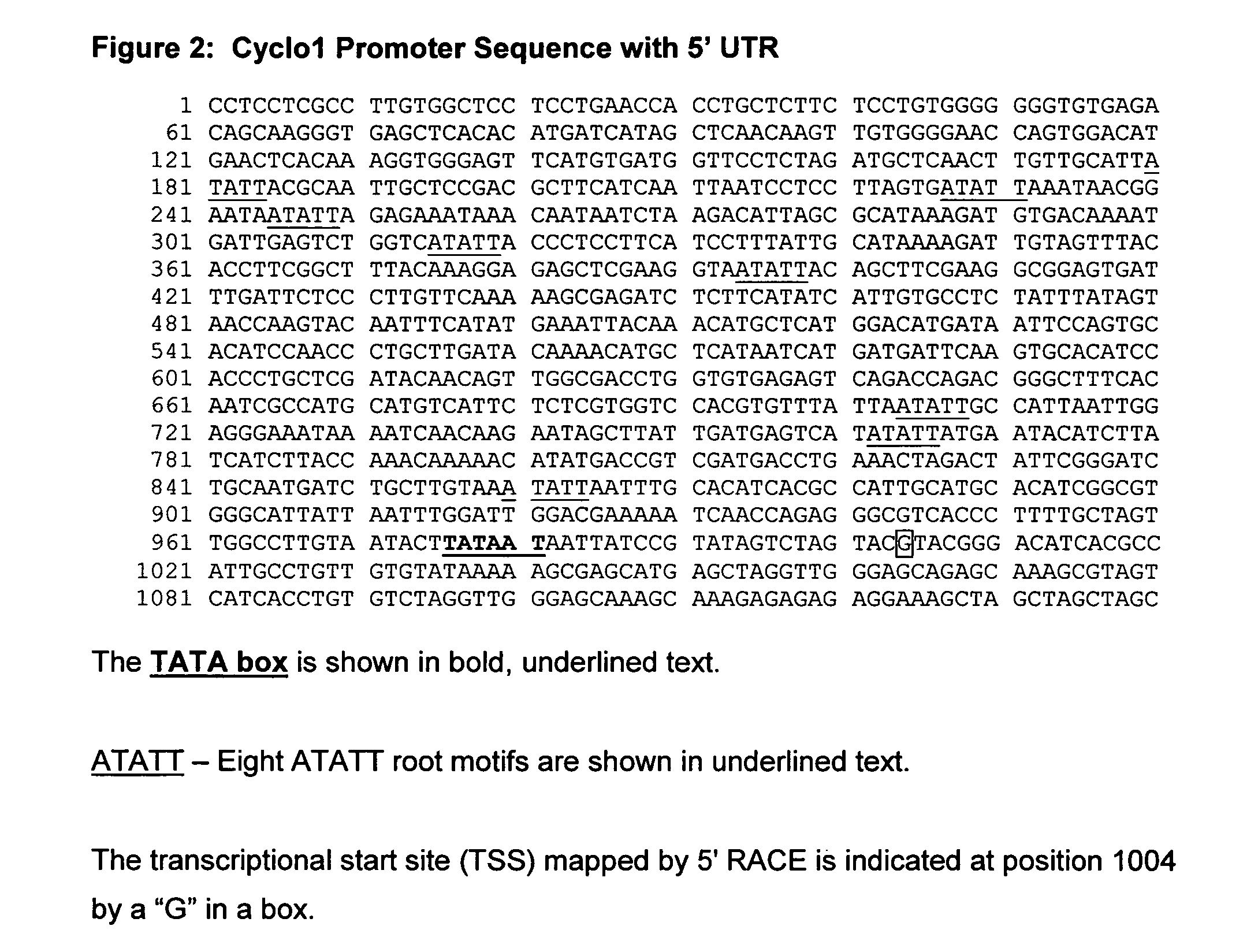Maize Cyclo1 gene and promoter
a cyclo1 gene and promoter technology, applied in the field of plant molecular biology, can solve the problems of insufficient study of gene expression in plant roots, lack of readily available, undesirable phenotypic and agronomic effects,
- Summary
- Abstract
- Description
- Claims
- Application Information
AI Technical Summary
Benefits of technology
Problems solved by technology
Method used
Image
Examples
example 1
Expression Pattern of the Cyclo1 Gene
[0220] Evidence that the Cyclo1 gene is expressed in a root preferred manner was obtained using Lynx Massively Parallel Signature Sequencing technology (MPSS) (see Brenner S, et al. (2000) Nature Biotechnology 18:630-634, Brenner S et al. (2000) Proc NatlAcad Sci USA 97:1665-1670). This technology involves the generation of 17 base signature tags from mRNA samples that have been reverse transcribed. The tags are simultaneously sequenced and assigned to genes or ESTs. The abundance of these tags is given a numerical value that is normalized to parts per million (PPM) which then allows the tag expression, or tag abundance, to be compared across different tissues. Thus, the MPSS platform can be used to determine the expression pattern of a particular gene and its expression level in different tissues.
[0221] Searching the Lynx MPSS database identified signature tags that were root preferred. One of these tags corresponded to the Cyclo1 gene. The di...
example 2
5′ RACE to Map the Transcriptional Start Site for the Cyclo1 mRNA
[0222] 5′ RACE was used to map the transcriptional start site for the Cyclo1 mRNA and was performed according to the protocol provided with the 5′ RACE System for the Rapid Amplification of cDNA Ends (Invitrogen, Carlsbad, Calif.) using RNA isolated from roots of maize inbred B73 plants. Gene-specific primers (GSP) were designed to the 3′ UTR (using the EST sequence) as indicated below. GSP1 (SEQ ID NO: 2), located on the complementary strand from +284 to +314 relative to the translation start site (ATG) of Cyclo1, was used for first strand synthesis. Following RNase treatment, reaction clean-up and dC-tailing of the cDNA, PCR amplification was performed with GSP2 (SEQ ID NO:3), also located on the complementary DNA strand between +257 to +287 relative to the ATG, in combination with the Abridged anchor primer (supplied in the kit).
[0223] PCR was performed using Pfx DNA Polymerase (Invitrogen). The PCR conditions use...
example example 3
Isolation of the Promoter for the Cyclo1 Gene
[0225] Sequence upstream of the translational start site of the Cyclo1 gene was isolated using the Universal Genome Walker kit (BD Biosciences Clontech, Palo Alto, Calif.).
[0226] Genomic libraries were constructed from maize B73 genomic DNA according to the kit protocol. Gene-specific primers (GSPs) were designed to the complement of the EST clone sequence corresponding to +138 to +171 bp (GSP7; SEQ ID NO: 5) and to +108 to +141 (GSP8; SEQ ID NO: 6) relative to the Cyclo1 translational start site. Primary PCR reactions using primers GSP7 and AP1 and secondary reactions using GSP8 and AP2 (AP1 and AP2 are supplied in the kit) were performed using the Advantage cDNA PCR Kit (BD BioSciences Clontech). Touchdown PCR was conducted under the following conditions for both primary and secondary PCR reactions: 20 cycles of 94° C. for 15 seconds and 65° C. for 4 minutes—with each successive cycle being reduced by 0.5° C. for the annealing and ext...
PUM
| Property | Measurement | Unit |
|---|---|---|
| temperature | aaaaa | aaaaa |
| temperature | aaaaa | aaaaa |
| pH | aaaaa | aaaaa |
Abstract
Description
Claims
Application Information
 Login to View More
Login to View More - R&D
- Intellectual Property
- Life Sciences
- Materials
- Tech Scout
- Unparalleled Data Quality
- Higher Quality Content
- 60% Fewer Hallucinations
Browse by: Latest US Patents, China's latest patents, Technical Efficacy Thesaurus, Application Domain, Technology Topic, Popular Technical Reports.
© 2025 PatSnap. All rights reserved.Legal|Privacy policy|Modern Slavery Act Transparency Statement|Sitemap|About US| Contact US: help@patsnap.com



